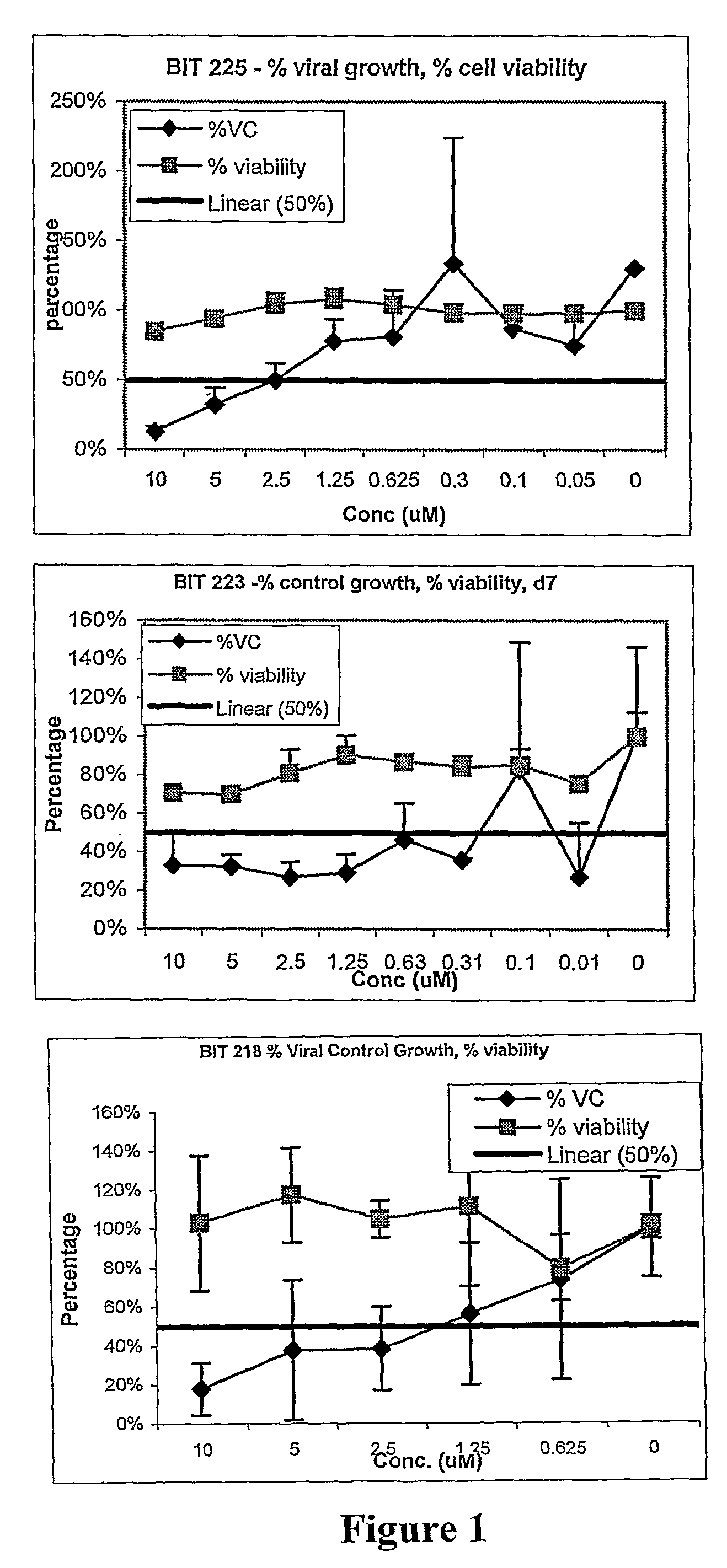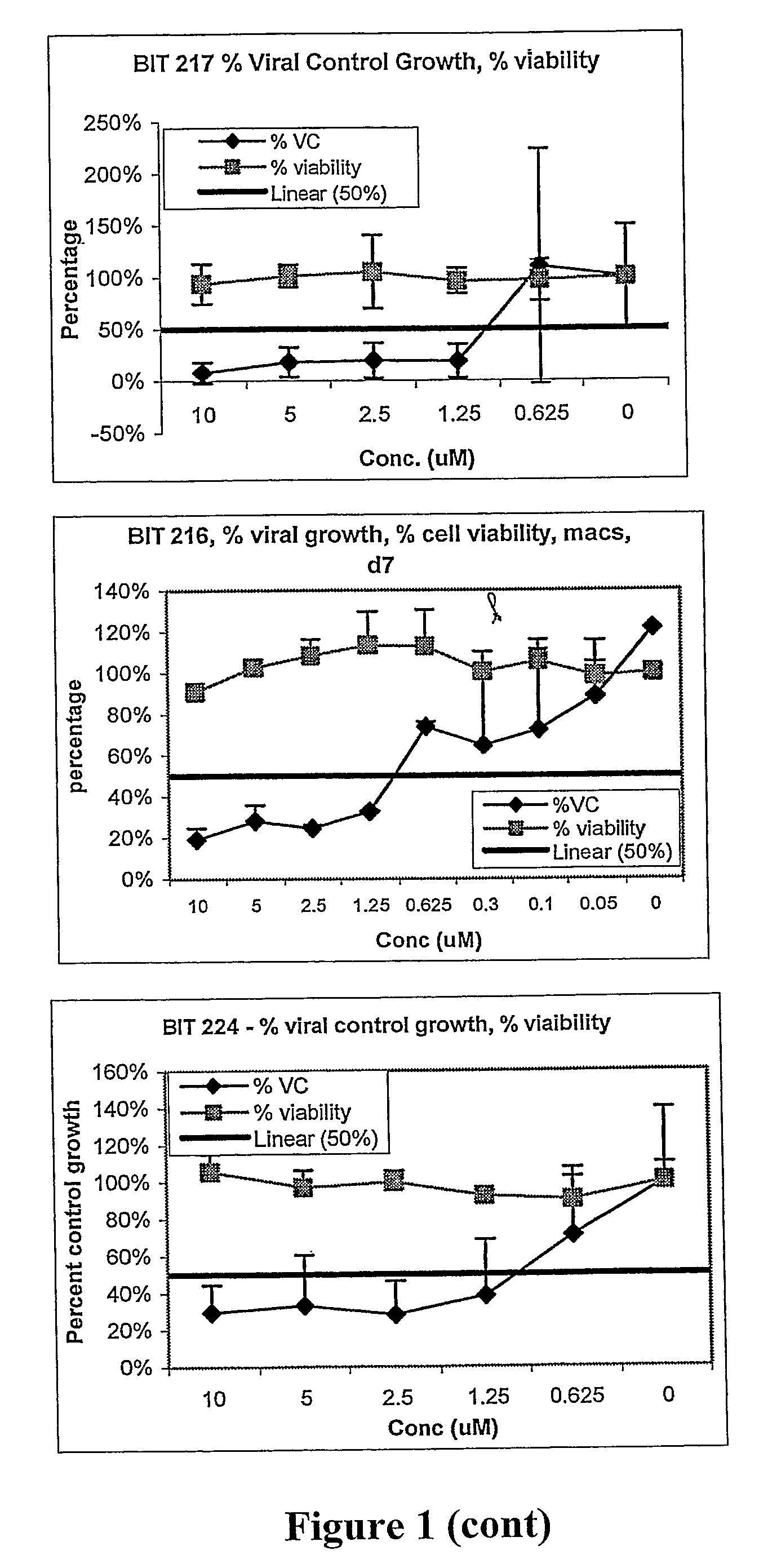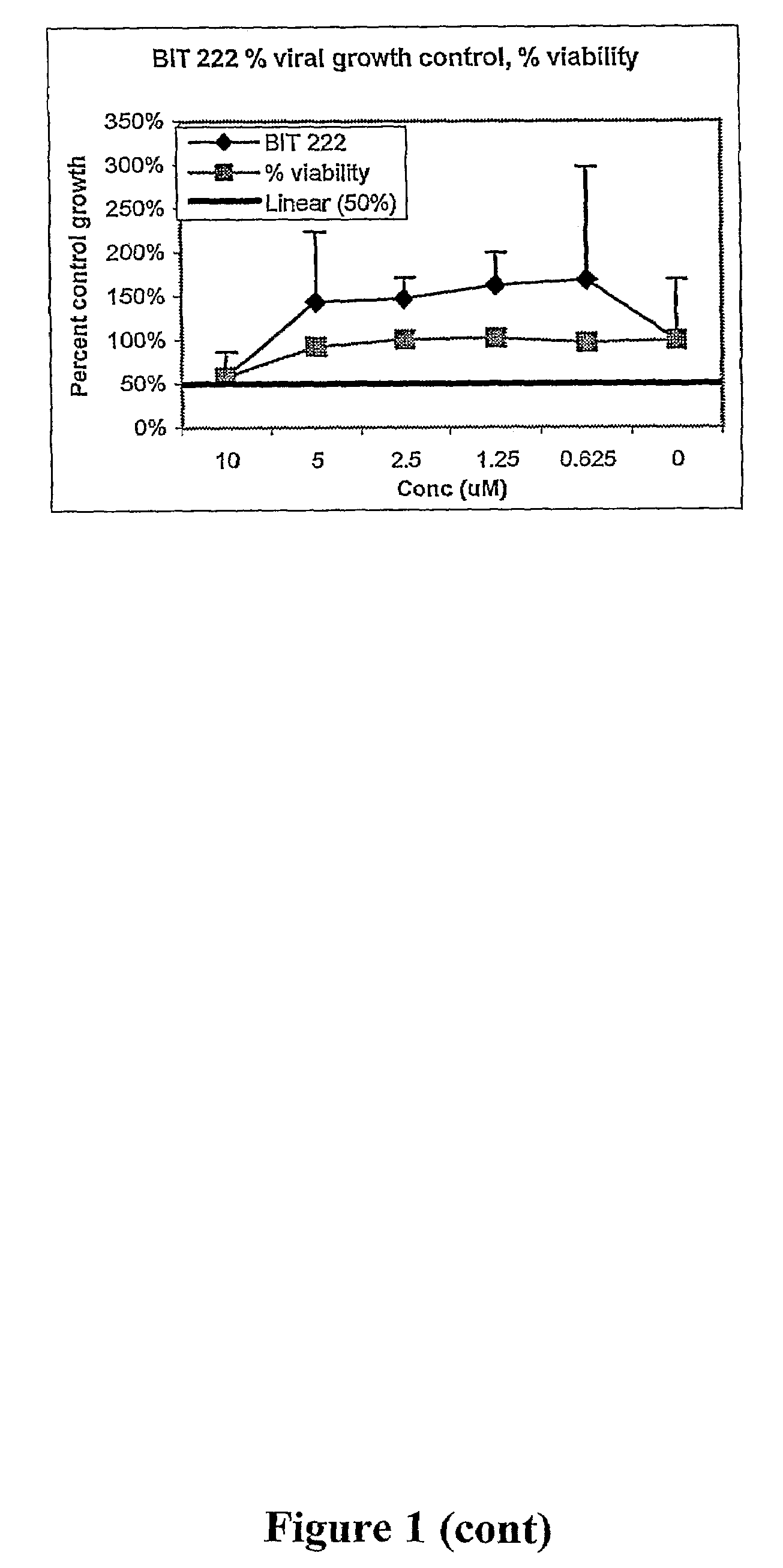Antiviral compounds and methods
a technology of compound and composition, applied in the field of compound and compositions having antiviral activity, can solve the problems of ineffective treatment or inadequate treatment currently available in large proportions of infected patients, and achieve the effect of reducing, retarding or otherwise inhibiting the growth and/or replication of a virus
- Summary
- Abstract
- Description
- Claims
- Application Information
AI Technical Summary
Benefits of technology
Problems solved by technology
Method used
Image
Examples
example 1
4-Hydroxyindan
[0163]4-Aminoindan (3.0 g) was added to a solution of concentrated sulphuric acid (2.4 mL) in water (15 mL). More water (15 mL) was added and the mixture cooled to SOC. A solution of sodium nitrite (1.71 g) in water (4.5 ml) was added portionwise to the mixture while maintaining the temperature below 5C. After addition was complete the mixture was allowed to Mann to room temperature and urea (0.29 g) was added. The mixture was stirred for a further 5 minutes before being heated at 45° C. for 30 minutes. The mixture was then cooled to room temperature and extracted with ethyl acetate. The combined organic extracts were washed with 2M aqueous sodium hydroxide (2×100 mL) and these aqueous extracts were then acidified with hydrochloric acid and extracted with ethyl acetate (3×100 mL). The combined organic extracts were then washed with brine and dried (Na2SO4) before being concentrated in vacuo. The resulting crude product was chromatographed over silica gel. Elution with ...
example 2
4-Indanyl triflate
[0164]To a solution of 4-hydroxyindan (1.2 g, 8.9 mmol) in pyridine (5 mL) at 0° C. was slowly added trifluoromethanesulphonic anhydride (1.6 mL, 9.5 mmol). The resulting mixture was stirred at 0° C. for 5 minutes before being allowed to warn to room temperature and then stirred for 45 minutes. The mixture was then poured into water and extracted with ethyl acetate (3×25 mL). The combined extracts were washed sequentially with water, 1M aqueous hydrochloric acid, water and brine, then dried (Na2SO4) and concentrated in vacuo to give the crude triflate as an orange oil (2.13 g, 89%).
example 3
Methyl 3-(indan-4-yl)acrylate
[0165]A mixture of crude 4-indanyl triflate (2.13 g, 8.0 mmol), methyl acrylate (1.01 mL, 11.2 mmol), triethylamine (4.4 ml, 32 mmol, eq) and dichlorobis(triphenylphosphine)palladium (170 mg 0.24 mmol) in dimethylformamide (15 mL) was heated at 85° C. for 71 hours. A small aliquot was removed and worked up for GC / MS analysis which revealed a significant amount of starting material was still present. Additional methyl acrylate (0.7 mL) triethylamine (2 mL) and the palladium catalyst (170 mg) were added and the mixture was heated for a further 24 hours. The mixture was then poured into water, extracted with ethyl acetate, and the organic extracts were washed with water, then brine, dried (Na2SO4), and concentrated in vacuo to give the crude product as an oil (2.4 g). The crude product was chromatographed over silica gel. Elution with ethyl acetate / hexanes (1:19) gave the starting triflate (812 mg, 38%) as a colourless oil, followed by the desired methyl 3-...
PUM
 Login to View More
Login to View More Abstract
Description
Claims
Application Information
 Login to View More
Login to View More - R&D
- Intellectual Property
- Life Sciences
- Materials
- Tech Scout
- Unparalleled Data Quality
- Higher Quality Content
- 60% Fewer Hallucinations
Browse by: Latest US Patents, China's latest patents, Technical Efficacy Thesaurus, Application Domain, Technology Topic, Popular Technical Reports.
© 2025 PatSnap. All rights reserved.Legal|Privacy policy|Modern Slavery Act Transparency Statement|Sitemap|About US| Contact US: help@patsnap.com



